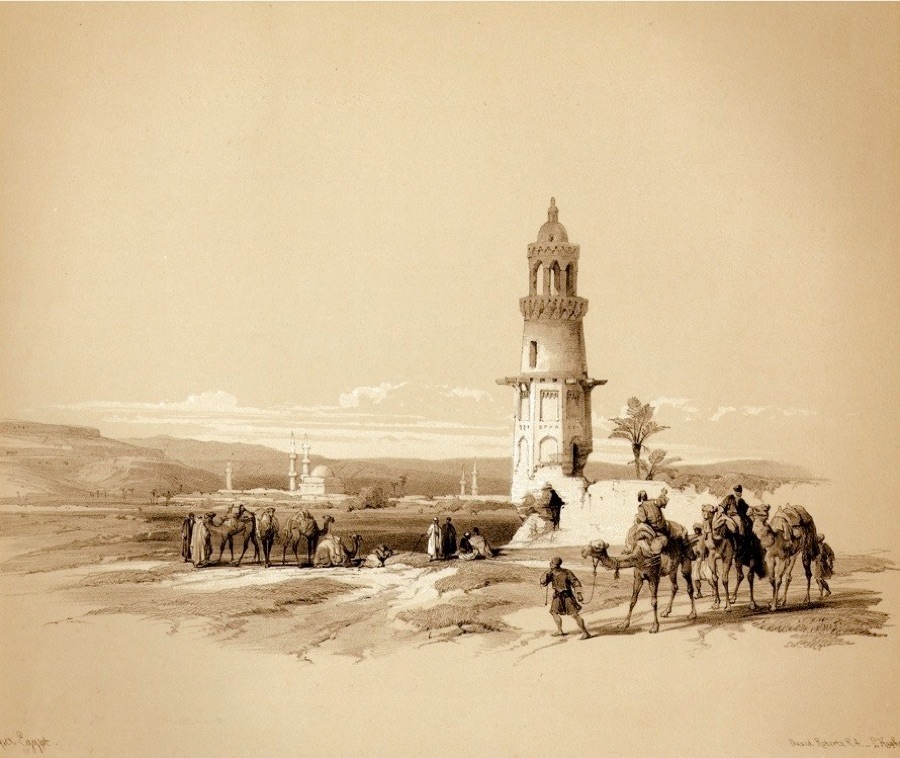SIOUT.
FORMERLY Lycopolis - a name derived from the worship of the jackal, one of the mythological menagerie of the ancient Egyptians. There is a tradition, however, which gives great interest to this place in Christian history, as the resting-place of Joseph and Mary when they fled into Egypt, with the infant Saviour, from the persecution of Herod.
Siout is situated on the western side of the Nile, about a mile and a half from the river, and about midway between it and the Libyan hills, in which are numerous caves and tombs of the ancient inhabitants. The town itself, surrounded by luxuriant fields and gardens, lies above the level of high Nile. During the inundation the country around is flooded, and the approach to the town is by a dyke, or embankment, connected with a bridge of many arches: the approach by the picturesque ruins of a mosque is striking. The present town, one of the largest above Cairo, is comparatively modern, and contains 20,000 inhabitants; the streets are wider and the houses better built than in most of the towns of Egypt: it has numerous minarets and a palace of the Pasha.
Siout contains about one thousand Christians, and is the see of a Coptic bishop. It is a place of some commercial importance as a point of communication on the Nile with the caravan of Sennaar, the emporium of slaves and the merchandize of Abyssinia. The caves of ancient Lycopolis furnish a great supply of mummies; and fragments of bodies and pieces of cere-cloth attest the unfeeling rapacity for violating the tombs, which the ready market offered by mummy-hunters has engendered.
Roberts’s Journal.


